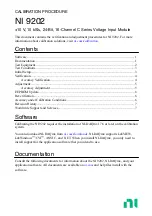
79
STAGE ONE:
CLEANING
PROBLEM 1:
I CAN'T REMOVE THE VESSEL LID
Solution:
Sometimes the vessel lid can be difficult to remove if the
threads become bound together too tightly. In this case all
that is needed is a little extra muscle from another person.
So get help to unwind the lid counter-clockwise and you'll
find the extra torque will allow the lid to be removed easily.
STAGE THREE:
DURING FERMENTATION
PROBLEM 1:
THE YEAST DOESN’T SEEM TO START FERMENTING
Solution:
Dried ale yeast should take ½ a day to show signs of fermenting
and lager yeast about 1 day. If it takes longer than this then
wait one more day for signs of activity. If by Day 2 there is no
activity then it could be possible that the yeast had somehow
died before use. If the yeast was rehydrated in water over 35°C
(95°F) it may have been too hot. In general the dried brewing
yeast WilliamsWarn uses is quite stable and should ferment
even past its use by date unless the sachet has been broken and
oxygen ingress has occurred or if it has been stored in very warm
temperatures.
In the case of no activity after 2 days, close the vessel valve,
remove the sediment bottle, dump the non-fermenting yeast
which will likely be sedimented at the bottom and then
rehydrate a new quality yeast in 25°C water (77°F) for 10
minutes. Add the sediment bottle back onto the brewery
with the new quality yeast and open the valve in 2 stages, as
described in the instructions (to avoid temperature shock).
Monitor closely.
PROBLEM 2:
THE PRESSURE ISN’T BUILDING UP
Solutions:
1. Check that there is activity in the sediment bottle and
foam seen on the beverage surface through the sight-glass
and that the vessel valve is open. If fermentation is only
just starting, the amount of carbon dioxide being generated
is small and the pressure will take a while to build up.
If fermentation is vigorous and the pressure is not building
up over a few hours under such fermentation conditions,
then you probably have a leak. Ale yeast should take ¾ of
a day to start to build up pressure and lager yeast about
1 day. Firstly, release any pressure in the vessel via the
VPRV by pressing the VPRV release button and remove the
lid. Check the seal is sitting in the groove properly. It may
need a stretch as explained in Appendix 4. Ensure the seal
sits in the groove as shown in the photos in Appendix 4 and
then re-close the lid tightly. Then monitor pressure build up.
To speed up this test, you can manually add CO
2
from your
gas cylinder and pressurise the tank to 1 bar. Firstly, wind
the VPRV down to its fully closed position (clockwise). Then
open the 3-way valve. Close the 3-way valve when the tank
is at 1 bar and watch for a pressure drop. If the seal is in
place properly and the lid is closed, the pressure should
hold. Once the seal is confirmed, you can leave the pressure
in the vessel, but re-set the VPRV to your chosen set-point
e.g. 2½ turns open (anti-clockwise).
2. It is possible the VPRV could be leaking. Obtain a children’s
party balloon and place over the VPRV. If the balloon
expands, the VPRV is leaking and needs attention. Release
gas from the VPRV by pressing the VPRV release button and
then unwind the VPRV fully. Examine the seal and spring for
faults or obstructions or grit and clean. Examine the VPRV
cavity for any obstructions or grit and remove if need be.
Replace the VPRV with the seal and spring in their correct
positions and monitor the pressure. If pressure still doesn’t
build up, call the local help desk.
PROBLEM 3:
I CAN’T QUITE GET THE PRESSURE RIGHT WITH THE VPRV.
Solutions:
1. You have a few days to get the pressure right during the
first days of fermentation. Set an excess pressure on the
VPRV, let the pressure in the vessel build up and then turn
the VPRV counter-clockwise to release pressure until your
set-point is reached and no more pressure is emitted at that
setting. Check gas is released out the VPRV as the pressure
goes past your desired set-point and then leave the VPRV
set at that mark.
2. Just ferment at a pressure higher than your target. The yeast
should ferment all the way even at high pressures and you
can release excess pressure later.
STAGE FOUR:
COOLING
PROBLEM 1:
THE COOLING DOESN’T SEEM TO WORK.
Solutions:
1. Check you have the brewery turned on. If not, turn it on.
2. Check you have set the correct temperature and that it is
lower than the ambient temperature. If not, set the correct
temperature.
3. Check the yellow refrigeration light is lit up on the tem-
perature controller LED readout. This should read SUB2.
If the set-point is more than 1°C lower than the actual
temperature this text should be lit up on the controller
screen. If it is lit up and the temperature is not falling, there
may be an issue with the compressor or a small pump that
circulates the glycol. Call the local help desk.


































